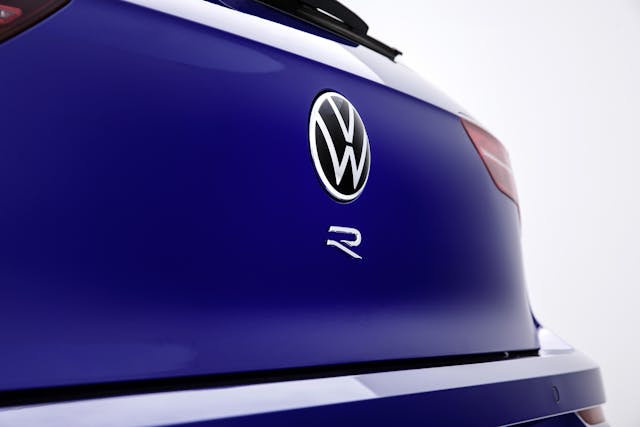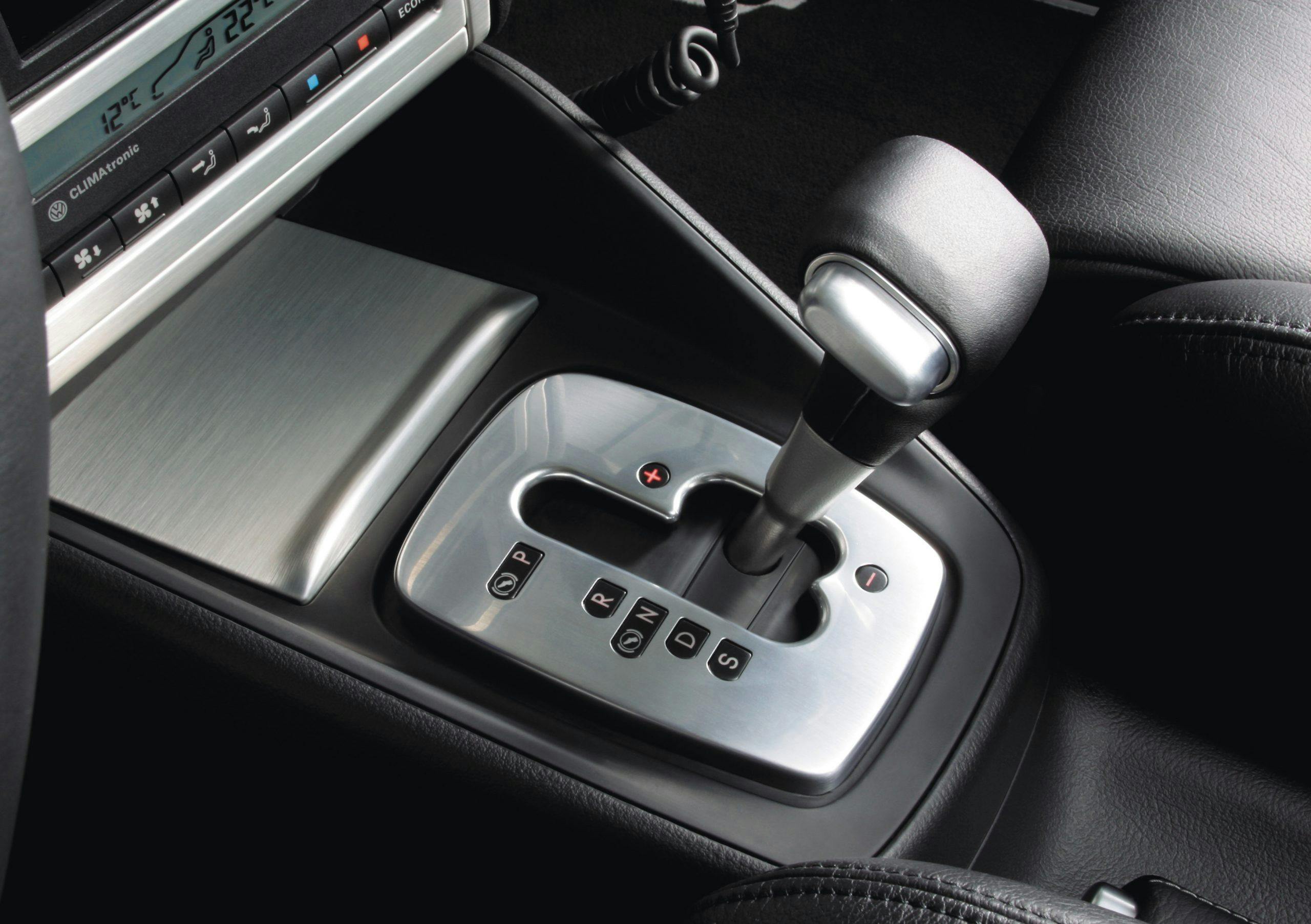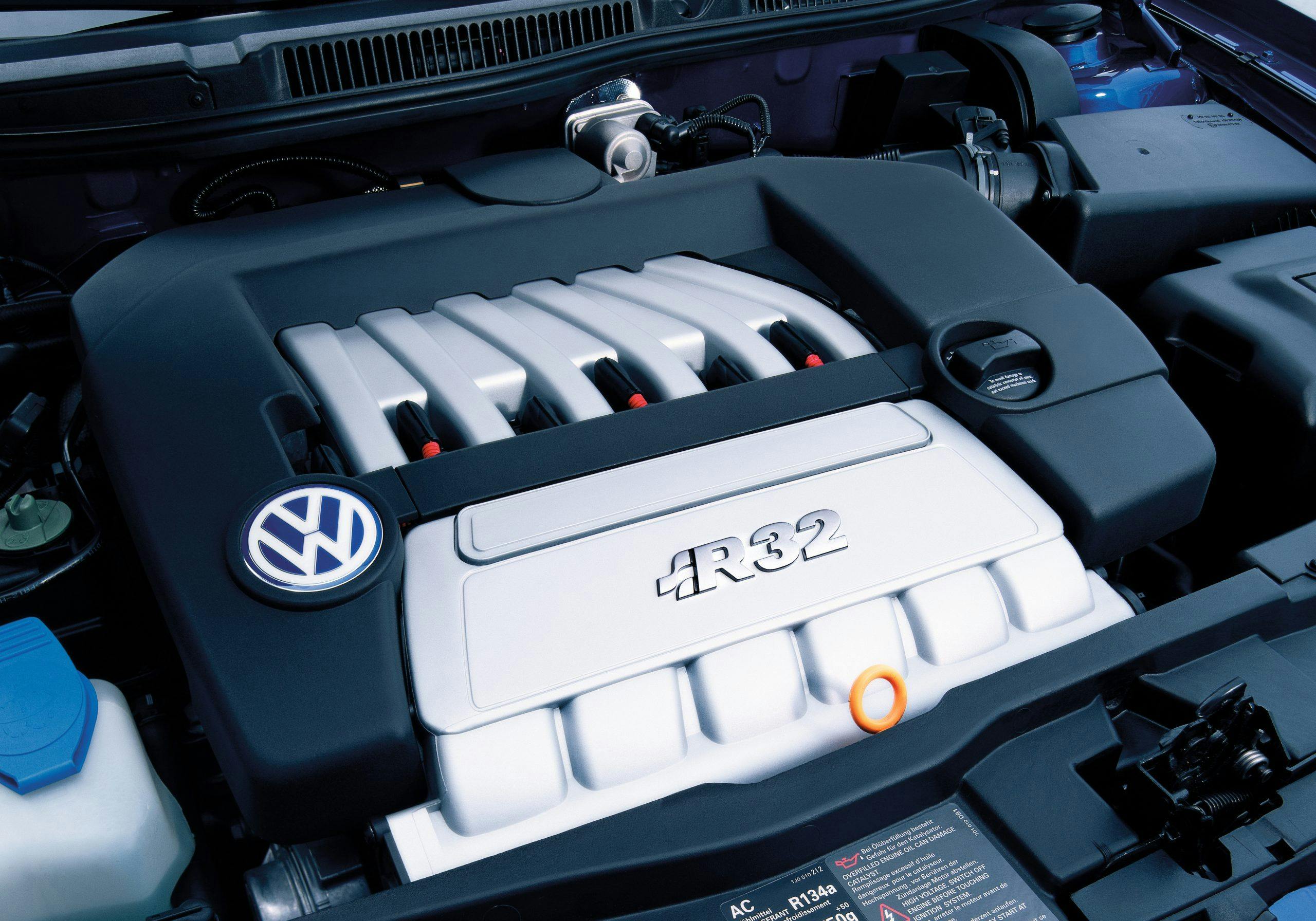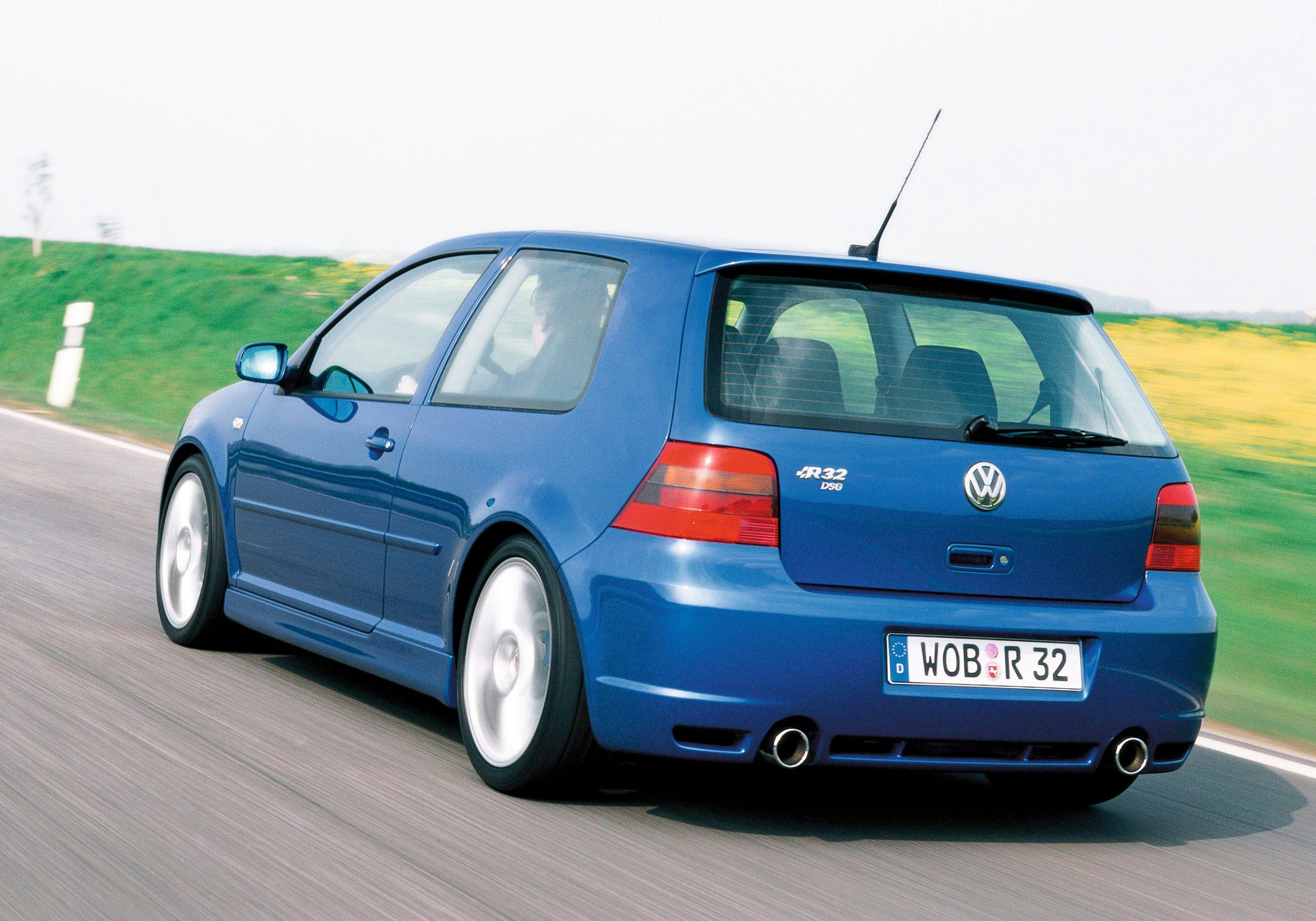Media | Articles
As VW teases the new Golf R we remember the first R32
Volkswagen is launching the latest Golf R this week, the most powerful Golf in history and the latest in a line that began in 2002 with the R32.
The new R, based on the Mk. 8 Golf is set to pump out 333 hp from its EA888 turbocharged two-liter engine and will drive all four wheels through a seven-speed dual-clutch transmission. A Golf R Plus with over 400 hp is also rumored.

However, if it wasn’t for the success of the very first R32, these all-wheel-drive über-Golfs would never have existed. In August 2002 I flew to Hanover, Germany and took a VW bus to the pretty little town of Rinteln. Perfectly positioned for an unrestricted autobahn run and a dash through atmospheric forests on perfectly-surfaced roads, Rinteln clearly wasn’t solely chosen for its R32 zip code.
The R32 was based on the Golf 4Motion, but VW’s engineers bored and stroked its twin cam V-6 to 3189 cc and fitted it with new intake and exhaust cams and a fruity twin-pipe exhaust. Power was upped to 243 hp at 6250 rpm. The intelligent all-wheel-drive system deployed a Haldex coupling in the rear differential and an ESP system to brake individual wheels. A six-speed manual transmission was standard, but the R32 was also the first VW to be optioned with a DSG transmission. Lower than a regular Golf, and with a quicker steering rack, the R32 also boasted bigger brakes and bigger wheels with 225/40 tires.
Aside from the R32 badges, the fastest Golf of its day was distinguished by larger air intakes with mesh inserts, re-profiled front and rear bumpers, and blue tinted glass. Inside, deep bucket seats by König were installed, along with alloy trim and pedals.
Marketplace
Buy and sell classics with confidence
So, how did it drive? Its 6.6-second 0–62-mph sprint time may not seem that rapid by today’s standards, but I remember hard-launching the car and finding the traction stupendous. I ran it beyond 130 mph on the autobahn and it was rock-solid. The steering felt more direct and feelsome than I expected, and the level of grip was huge, but the engine’s immense low-down torque was offset by a slightly lackluster top end.
In conclusion I thought that the R32 felt like a budget Audi S3, which was probably the whole idea. As a kicking-off point for new breed of Golfs, it was a pretty good start.
In 2005 the second R32 appeared with 250 hp on tap from the venerable V-6. Four years later VW switched to turbo power and dropped the 32 whilst simultaneously increasing output to 270 hp. The now-obsolete fourth generation launched in 2013 and broke the 300-hp barrier.
The new Golf R will be revealed on 4 November, when we’ll find out just how worthy of its ancestors it really is.


















